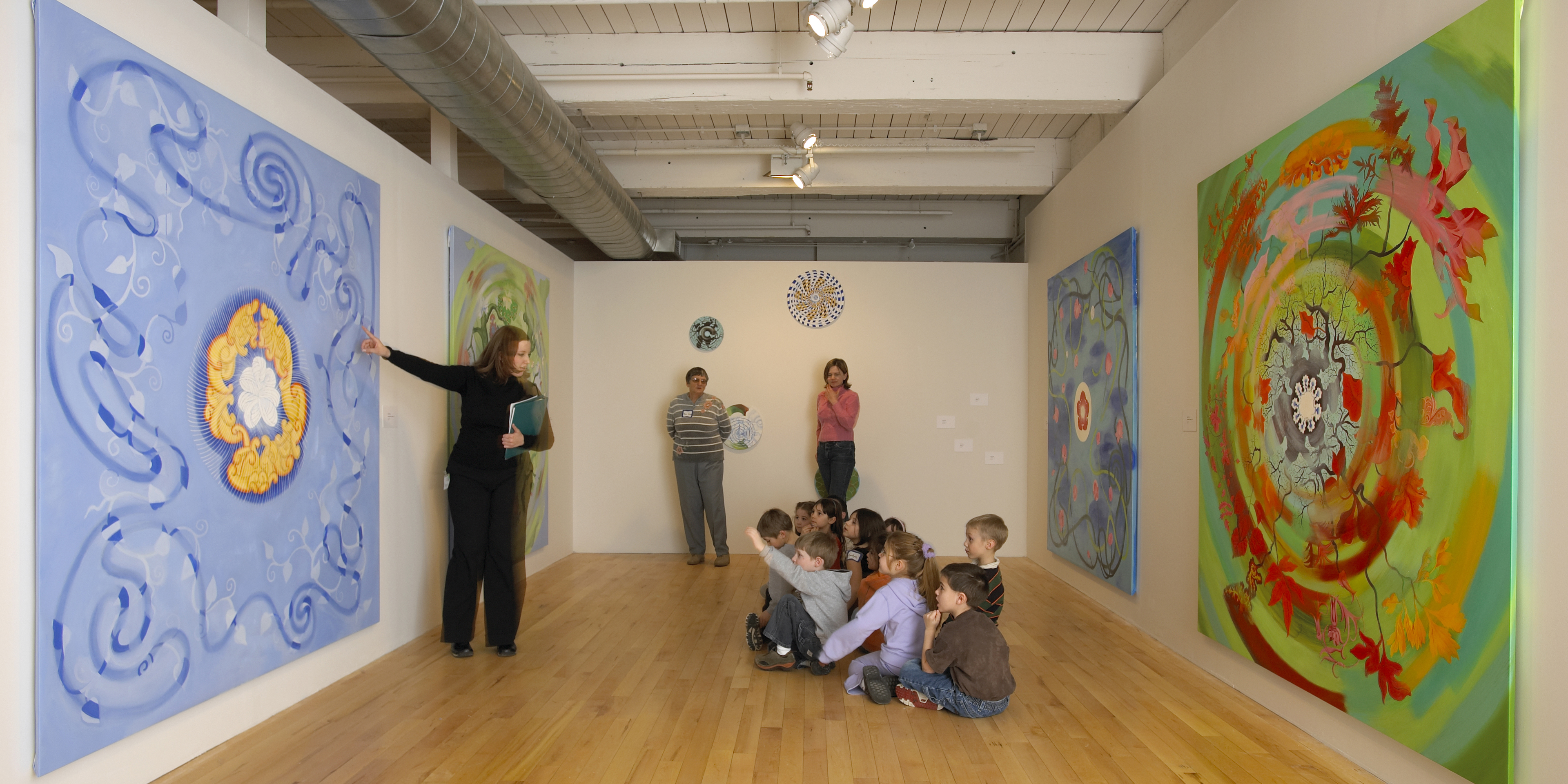Archive Exhibitions, Archived Education, Exhibition
- March 31–September 5, 2005
- Free
- Kidspace
Throughout the ages, artists have created images of magic gardens. Some are illustrations of make-believe places in which flowers come alive or have supernatural powers. Others are views of real spaces where plants produce interesting patterns and walkways such as a maze or a topiary garden, or a colorful flower and vegetable patch. Magic Gardens featured vibrant paintings by two individual artists and an artist group, each imagining various ways of using flowers and gardens for their magical properties.
In March 2005, conceptual artists Tim Rollins and K.O.S. (Kids of Survival) of New York City worked with the 4th–8th-grade students in the North Berkshire School Union to create flower paintings based on William Shakespeare’s A Midsummer Night’s Dream. The students designed their own artworks based on their responses to the special flower used by the play’s mischievous character, Puck. The liquid from this flower, when placed on an individual’s eyelid, causes this person to fall in love with the next living creature encountered. The student artworks were overlaid on text from Shakespeare’s play, linking the beauty of the written word with the magic of painted flowers.
Children’s book illustrator Timothy Basil Ering of Somerville, MA, shared his interest in the storytelling property of flowers. Twenty-four original illustrations from his popular picture book The Story of Frog Belly Rat Bone were included in the exhibit. In the story, Ering tells how a young boy lives in a dark, despairing place called “Cementland,” until the monster Frog Belly comes to life to help him build — through hope, perseverance, and a watchful eye — a colorful flower garden. Magic Gardens also included a series of lush, mixed-media flower paintings that Ering specifically created for Kidspace.
Painter Emily Cheng of New York City demonstrated how nature’s seasons affect the color and pattern of flowers in her large-scale paintings. Cheng’s work is influenced by various Eastern and Western cultures. She incorporates multiple styles from various periods within a single work of art. For example, in one flower painting, Cheng might include elements of a European Renaissance style and others from a distant era of Chinese painting. While her work does not necessarily illustrate a specific story, it can be read for symbolic, cultural, and historical information on flowers.


